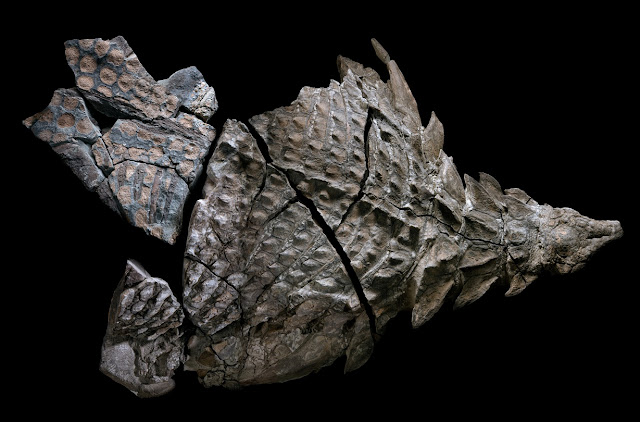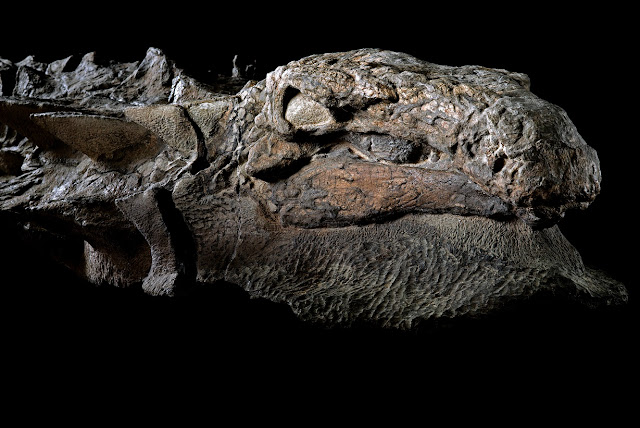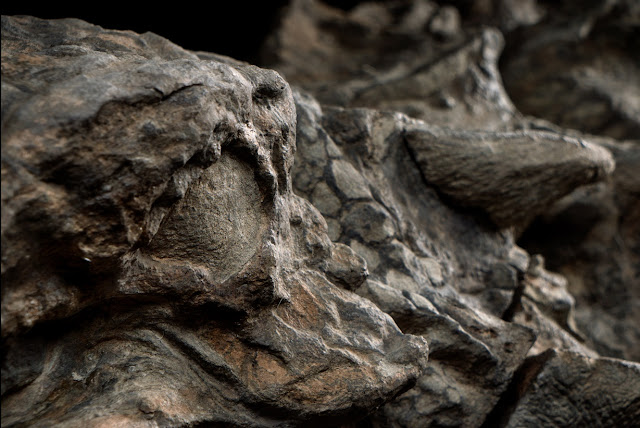‘Dinosaur Mummy’ Emerges From The Oil Sands Of Alberta
The animal probably died as it lived — defying predators with its heavy armor and size — and after 110 million years, its face remains frozen in a ferocious reptilian glare.

How the animal, a land-dwelling, plant-eating nodosaur, died is not known, but somehow its body ended up at the bottom of an ancient sea. Minerals kept the remains remarkably intact, gradually turning the body into a fossil. And when it was unearthed in 2022, scientists quickly realized that it was the best-preserved specimen of its kind.


“It’s basically a dinosaur mummy — it really is exceptional,” said Don Brinkman, director of preservation and research at the Royal Tyrrell Museum in Drumheller, Alberta.
The dinosaur, with fossilized skin and gut contents intact, came from the Millennium Mine six years ago in the oil sands of northern Alberta, once a seabed.


That sea was full of life, teeming with giant reptiles that grew as long as 60 feet, while its shores were traversed by massive dinosaurs for millions of years. The area has been coughing up fossils since the beginning of recorded time.


“The shovel operator at the mine saw a block with a funny pattern and got in touch with a geologist,” Dr. Brinkman said. “We went up and collected it.” The fossil, photographed for the June issue of National Geographic, went on display on .
Alberta law designates all fossils the property of the province, not of the owners of the land where they are found. Most are discovered after being exposed by erosion, but mining has also proved a boon to paleontologists.

Dr. Brinkman said the museum was careful not to inhibit industrial activity when retrieving fossils so that excavators weren’t afraid to call when they found something.
“These are specimens that would never be recovered otherwise,” Dr. Brinkman said. “We get two or three significant specimens each year.”
